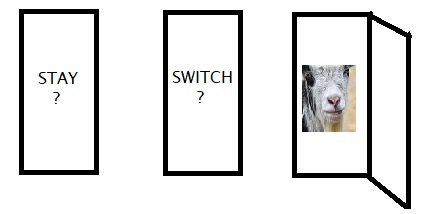
This one is about what Mr Monty shouldn’t do in the game show! The discussion on the “ideal” Monty Hall problem is available in a different post. Nonetheless, a quick proof is here. Suppose the player chose door 1 and Monty opened door 2, the probability of the car behind door 1 given Monty opened door 2 is P(C1|D2). Applying the Bayes’ formula,

Explanation
The prior probabilities, P(C1), P(C3) and P(C3), are all equal at 1/3. P(D2|C1) = 1/2 because Monty can not open D1, and only D2 or D3 (one out of two) is available. P(D2|C2) = 0 since Monty can never open D2 if the car is behind the door 2. Since the car really exists behind one of those doors, P(C1) + P(C3) + P(C3) and P(C1|D2) + P(C2|D2) + P(C3|D2) are both unity.
The real-life Monty vs the perfect problem
The motivation for this post is when I read somewhere that Monty Hall did not always open the door in the game show. If that was true, then the TV show presented a different uncertainty than what should’ve been a calculated risk due to probability.

